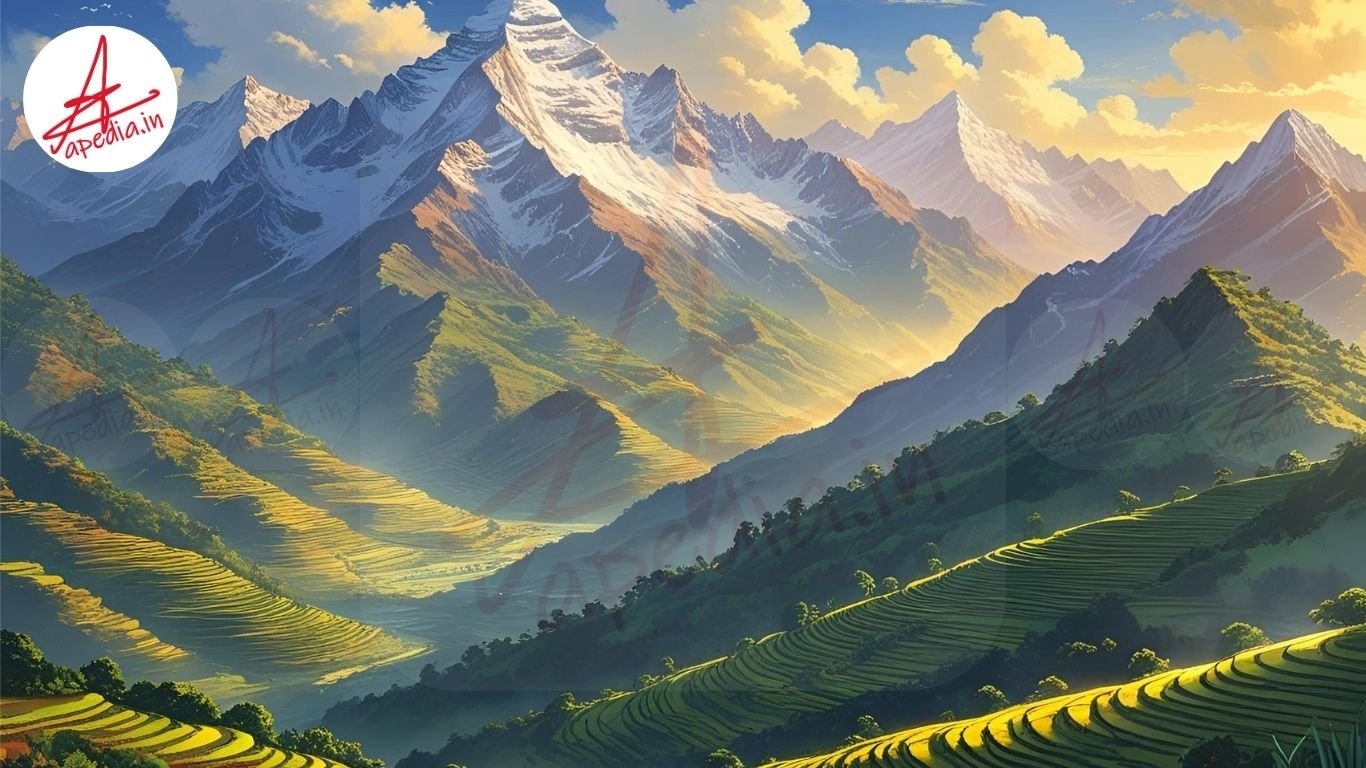Youngest and highest mountain range, stretching across Northern India.
UNESCO World Heritage Site known for biodiversity; runs along the western coast.
Discontinuous and older range on the eastern coastal region of India.
Among the world’s oldest fold mountains, located in northwestern India.
Central Indian ranges forming a natural divide between North and South India.
Introduction
India’s topography is enriched with a wide variety of mountain ranges that shape the climate, culture, and natural resources of the country. These mountains are not only scenic but are also critical to ecological balance, water sources, and agriculture.
Classification of Indian Mountains
The mountains of India can be broadly classified into four categories based on their geological formation and location:
1. The Himalayan Mountains
These are the youngest and tallest fold mountains in the world. Formed by the collision of the Indian and Eurasian plates, they span across northern states like Jammu & Kashmir, Himachal Pradesh, Uttarakhand, Sikkim, and Arunachal Pradesh. The Himalayas are further divided into:
- Greater Himalayas (Himadri): Highest peaks like Mount Everest and Kanchenjunga are found here.
- Lesser Himalayas (Himachal): Known for hill stations like Shimla and Manali.
- Shiwaliks: The outermost and youngest range.
2. The Peninsular Mountains
These include the ancient mountain ranges of central and southern India. They are older, eroded, and stable structures. Notable ones are:
- Western Ghats: High biodiversity and crucial for monsoon rains.
- Eastern Ghats: Discontinuous and lower in elevation than Western Ghats.
- Vindhya and Satpura Ranges: Separate the Indo-Gangetic plains from the Deccan Plateau.
- Aravalli Range: One of the oldest mountain ranges on Earth, located in Rajasthan.
3. The Purvanchal Hills
These ranges lie in the northeastern part of India, curving along the eastern border. They include hills like Patkai, Naga, Mizo, and Manipur hills. Covered in dense forests, they are rich in tribal culture and biodiversity.
4. Trans-Himalayan Mountains
Located to the north of the Great Himalayas in Ladakh and parts of Tibet, these include ranges like Zaskar, Ladakh, and Karakoram. They are rugged, dry, and sparsely populated but hold great strategic importance.
Conclusion
India’s mountain systems are diverse in origin, structure, and ecological roles. From the mighty Himalayas to the ancient Aravallis, each range contributes uniquely to the subcontinent’s identity, acting as natural barriers, weather regulators, and cultural landmarks.








